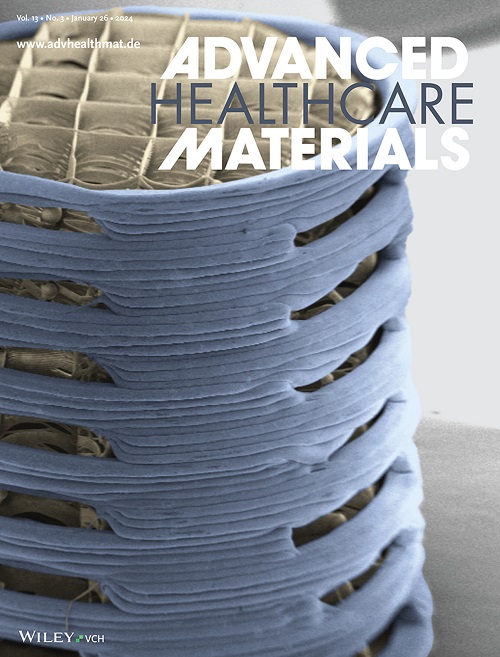Dye‐Based Fluorescent Organic Nanoparticles, New Promising Tools for Optogenetics
IF 10
2区 医学
Q1 ENGINEERING, BIOMEDICAL
引用次数: 0
Abstract
Dye‐based fluorescent organic nanoparticles are a specific class of nanoparticles obtained by nanoprecipitation in water of pure dyes only. While the photophysical and colloidal properties of the nanoparticles strongly depend on the nature of the aggregated dyes, their excellent brightness in the visible and in the near infrared make these nanoparticles a unique and versatile platform for in vivo application. This article examines the promising utilization of these nanoparticles for in vivo optogenetics applications. Their photophysical properties as well as their biocompatibility and their capacity to activate Chrimson opsin in vivo through the fluorescence reabsorption process are demonstrated. Additionally, an illustrative example of employing these nanoparticles in fear reduction in mice through closed‐loop stimulation is presented. Through an optogenetic methodology, the nanoparticles demonstrate an ability to selectively manipulate neurons implicated in the fear response and diminish the latter. Dye‐based fluorescent organic nanoparticles represent a promising and innovative strategy for optogenetic applications, holding substantial potential in the domain of translational neuroscience. This work paves the way for novel therapeutic modalities for neurological and neuropsychiatric disorders.

基于染料的荧光有机纳米粒子--前景广阔的光遗传学新工具
基于染料的荧光有机纳米粒子是通过在水中对纯染料进行纳米沉淀而获得的一类特殊纳米粒子。虽然纳米粒子的光物理和胶体特性在很大程度上取决于聚合染料的性质,但它们在可见光和近红外波段的出色亮度使这些纳米粒子成为一种独特而多用途的体内应用平台。本文探讨了这些纳米粒子在体内光遗传学应用中的前景。文章展示了这些纳米粒子的光物理特性、生物相容性以及通过荧光重吸收过程激活体内 Chrimson 蛋白的能力。此外,还介绍了利用这些纳米粒子通过闭环刺激减少小鼠恐惧的示例。通过光遗传学方法,纳米粒子展示了选择性操纵与恐惧反应有关的神经元并减少恐惧反应的能力。基于染料的荧光有机纳米粒子是一种前景广阔的光遗传应用创新策略,在转化神经科学领域具有巨大潜力。这项工作为神经和神经精神疾病的新型治疗模式铺平了道路。
本文章由计算机程序翻译,如有差异,请以英文原文为准。
求助全文
约1分钟内获得全文
求助全文
来源期刊

Advanced Healthcare Materials
工程技术-生物材料
CiteScore
14.40
自引率
3.00%
发文量
600
审稿时长
1.8 months
期刊介绍:
Advanced Healthcare Materials, a distinguished member of the esteemed Advanced portfolio, has been dedicated to disseminating cutting-edge research on materials, devices, and technologies for enhancing human well-being for over ten years. As a comprehensive journal, it encompasses a wide range of disciplines such as biomaterials, biointerfaces, nanomedicine and nanotechnology, tissue engineering, and regenerative medicine.
文献相关原料
| 公司名称 | 产品信息 | 采购帮参考价格 |
|---|
 求助内容:
求助内容: 应助结果提醒方式:
应助结果提醒方式:


